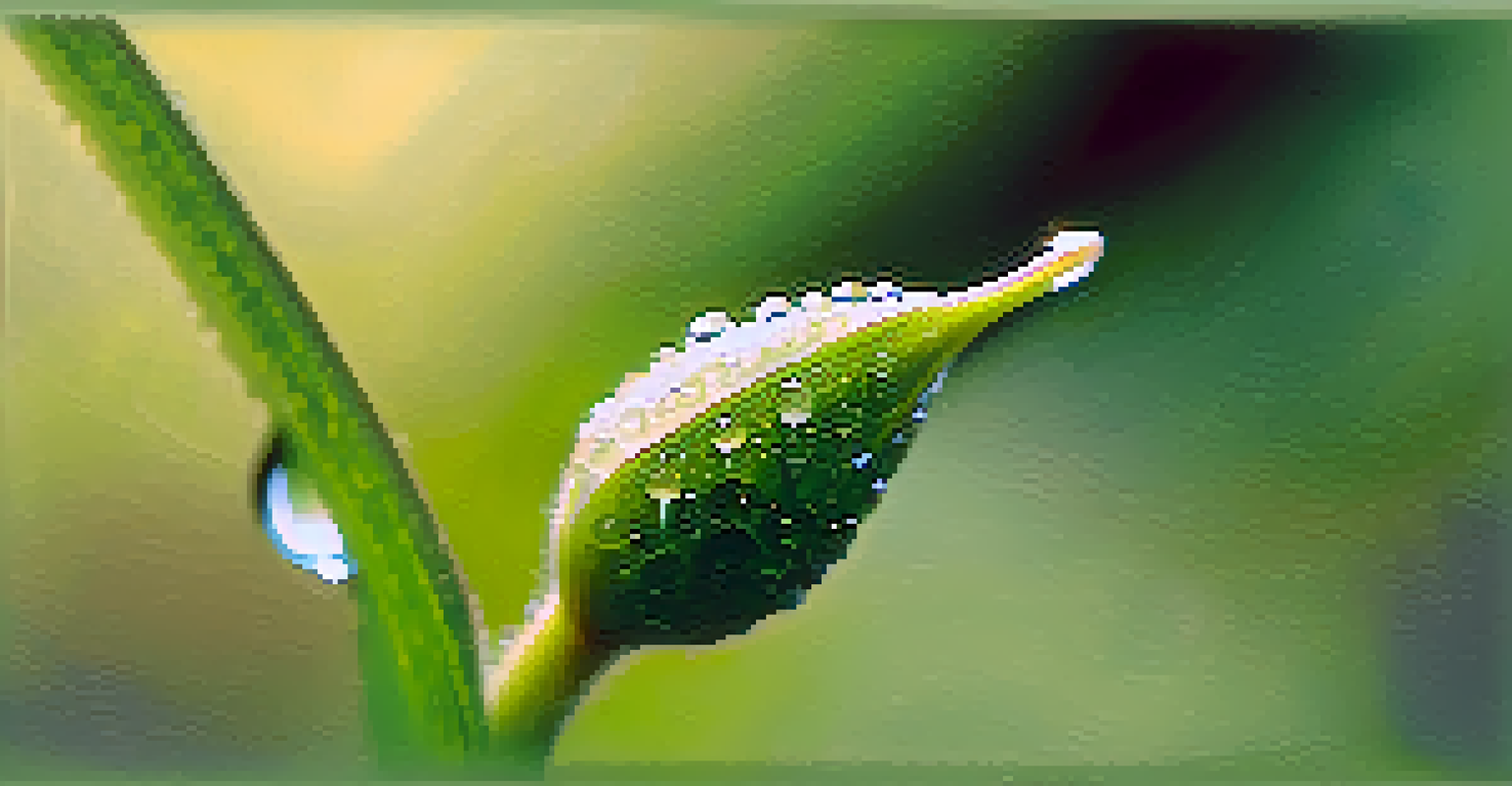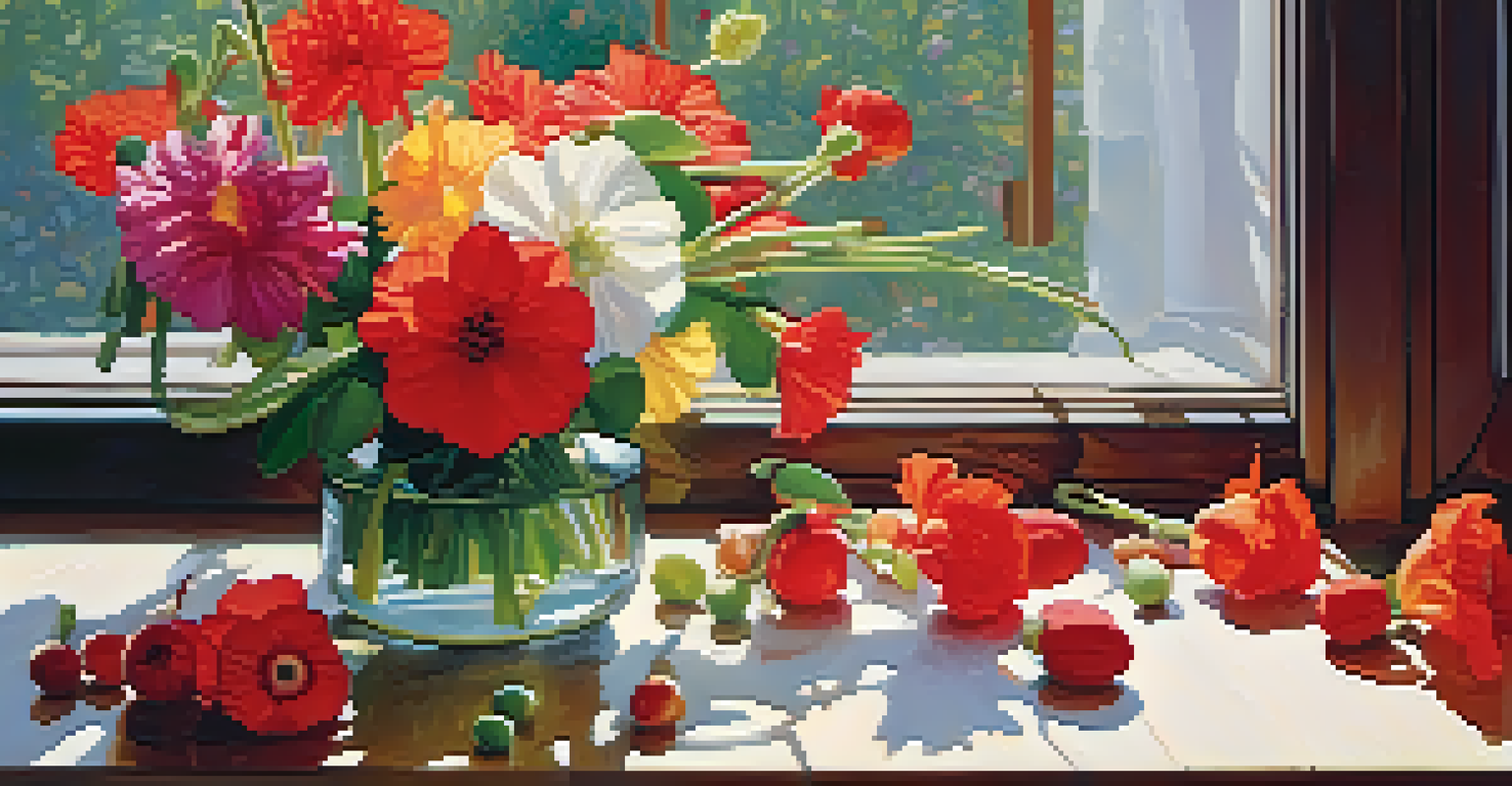Understanding Flower Anatomy: Parts and Functions Explained

Introduction to Flower Anatomy and Its Importance
Flowers are not just beautiful; they play crucial roles in plant reproduction. Understanding the anatomy of a flower helps us appreciate its function and the ecosystem around us. By diving into flower anatomy, we can also learn about pollination, seed production, and even the creation of fruits.
Flowers are the music of the ground. From earth's lips they speak.
Each part of a flower has a specific role, contributing to the overall life cycle of plants. For instance, flowers attract pollinators, which is vital for fertilization. Without this process, many plants would struggle to reproduce, affecting food chains and biodiversity.
Moreover, knowledge of flower anatomy can enhance gardening and landscaping practices. By recognizing the parts of a flower, gardeners can make informed decisions about planting, care, and breeding, leading to healthier and more vibrant gardens.
Exploring the Petals: Nature's Colorful Attractors
Petals are often the most visually appealing parts of a flower and serve a primary function: attracting pollinators. Their vibrant colors and unique shapes entice animals like bees, butterflies, and birds, which are essential for the plant's reproductive success. The beauty of petals is not just for show; it’s a strategic feature of flower anatomy.

In many species, petals can also produce scents that further draw in pollinators. These scents can act as signals, guiding pollinators to nectar, which rewards them for their efforts. This relationship between petals and pollinators is a perfect example of nature's intricate design.
Flowers' Role in Plant Reproduction
Understanding flower anatomy is crucial for appreciating how flowers contribute to plant reproduction and ecosystem health.
Additionally, the arrangement of petals can influence how effective a flower is at attracting its pollinators. Some flowers have petal shapes that provide easy access to nectar, while others have more complex structures that require specific pollinators to navigate, showcasing the diversity of flower adaptations.
Understanding the Sepals: Protectors of the Bud
Sepals are the green, leaf-like structures that encase a flower bud before it blooms. They play a protective role, shielding the delicate petals and reproductive parts from harsh environmental conditions like wind and rain. Without this safeguard, flowers might suffer damage before they even have a chance to open.
The earth laughs in flowers.
Beyond protection, sepals can also contribute to the aesthetic appeal of flowers. In some species, sepals are brightly colored and help attract pollinators, much like the petals do. This dual role enhances the flower's ability to thrive in its environment.
Moreover, sepals can provide crucial support to the flower's structure. They often hold the flower in place, ensuring that it remains stable as it grows and develops. This stability is essential for effective pollination and seed production.
The Core of the Flower: Stamen and Its Role
The stamen is the male reproductive organ of a flower, consisting of two main parts: the anther and the filament. The anther produces pollen, which is vital for fertilization, while the filament supports the anther, elevating it for optimal pollen dispersal. This positioning is crucial, as it allows pollinators to easily access the pollen.
Pollen itself is a powerhouse of genetic material. When transferred to the female parts of a flower, it can lead to fertilization and the formation of seeds. This process not only ensures the continuation of plant species but also contributes to the biodiversity of ecosystems.
Petals Attract Essential Pollinators
The vibrant colors and shapes of petals play a vital role in attracting pollinators, ensuring successful fertilization.
Interestingly, different flowers have varying stamen structures adapted to their specific pollinators. Some flowers have long stamens that require certain insects or birds to reach the pollen, while others have shorter stamens for easier access. This diversity highlights the intricate relationships between flowers and their pollinators.
The Pistil: The Heart of Flower Reproduction
The pistil is the female reproductive structure of a flower, comprising the stigma, style, and ovary. The stigma captures pollen, the style is the tube that connects the stigma to the ovary, and the ovary houses the ovules, which develop into seeds after fertilization. This intricate system is essential for the reproduction of flowering plants.
Once pollen lands on the stigma, it germinates and grows down the style to the ovary. This process is a critical phase in fertilization, leading to the production of seeds that can grow into new plants. The efficiency of this process largely determines a flower's reproductive success.
Moreover, many flowers have evolved unique features in their pistils to attract specific pollinators. For example, some flowers have sticky stigmas to enhance pollen capture, while others might have styles that are shaped to suit particular pollinators. These adaptations illustrate the remarkable interplay between plant structure and pollinator behavior.
The Role of Ovules: Seeds in the Making
Ovules are the tiny structures within the ovary of the pistil that develop into seeds after fertilization. Each ovule contains the potential for a new plant, making them incredibly important for plant reproduction and survival. Once fertilization occurs, ovules transform into seeds, ready to embark on their journey to grow into new plants.
The process from ovule to seed is fascinating. After the ovule is fertilized by pollen, it undergoes several changes, eventually developing a protective outer layer. This layer ensures that the seed can survive harsh conditions until it finds the right environment to germinate.
Pistils and Ovules Ensure Seed Production
The pistil's structure and the ovules within it are essential for seed development, impacting the survival of plant species.
Additionally, the number of ovules in a flower can vary greatly, impacting seed production. Some flowers produce a few seeds, while others can generate hundreds. This variability helps ensure that at least some seeds will find suitable conditions for germination, contributing to the plant's survival.
Conclusion: The Interconnectedness of Flower Anatomy
Understanding flower anatomy reveals the intricate relationships between different parts and their functions. Each component, from petals to ovules, plays a vital role in the overall reproductive success of plants. This interconnectedness is a beautiful reminder of how nature works in harmony.
Moreover, recognizing the roles of various flower parts can enhance our appreciation for the natural world. Whether you're a gardener, a nature enthusiast, or simply curious, this knowledge enriches our experience of flowers and their environments.

As we continue to explore and learn about flower anatomy, we gain insights not only into the plants themselves but also into the ecosystems they inhabit. This understanding fosters a deeper connection to nature and encourages us to protect and preserve the diverse plant life around us.